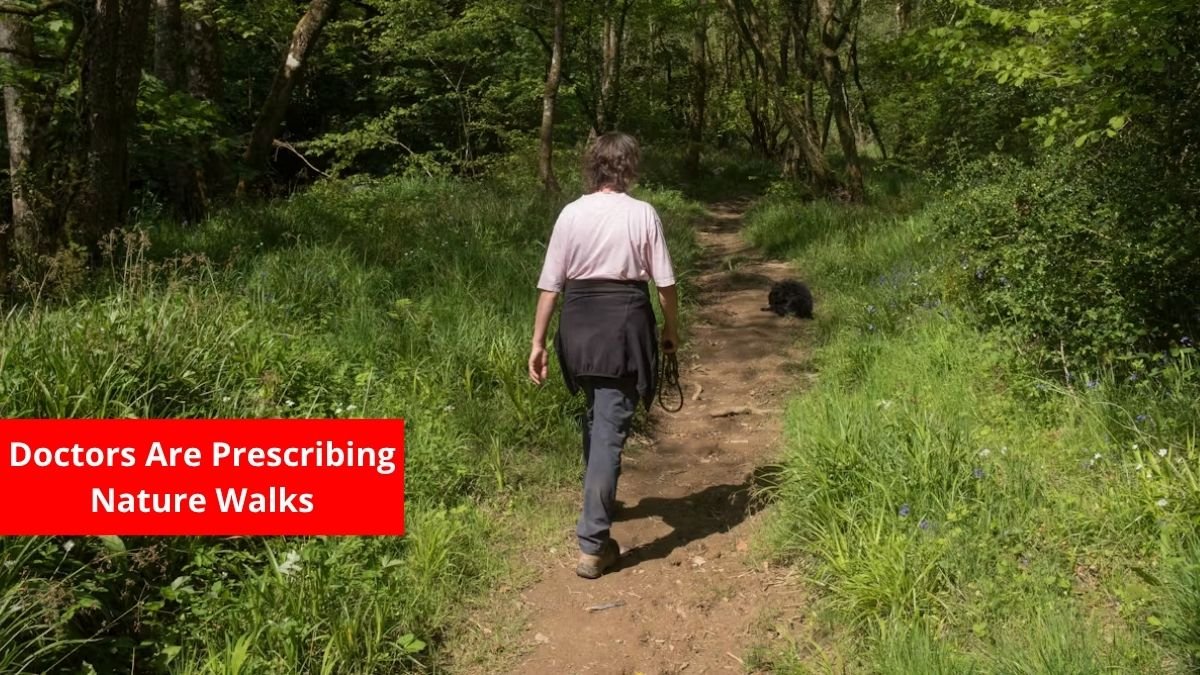In early April 2022, Doctors more than two dozen children and their families gathered under giant redwood trees in a regional park near the city of Oakland, California. With them was a doctor – Dr. Nusheen Razani. They were all breathing fresh air and talking about a unique natural phenomenon called a fairy ring. What happens is that when a large tree is cut down, smaller trees grow around it in a circle, as if they were the offspring of the larger tree.
All these families were part of a special program at UCSF Benioff Children’s Hospital Oakland, run by Dr. Razani. The program is called the “Center for Nature and Health”. Its goal is to connect children with nature, especially those who are facing mental anxiety, autism, obesity or developmental problems, and who lack greenery or open spaces around them. Every month, such children are taken on a trip to the park so that they can get closer to nature and improve their mental and physical health.
This program is part of a growing trend called “park prescription”.
This means that doctors advise their patients to spend time in nature along with medicines. Such programs have become very popular in the last few years, because now research has shown that spending time in nature reduces stress and improves mental health.
Dr. Razani says, “It is now clear that nature is good for you.” Research has found that people who live near greenery have seen improvement in their mental and physical health. It has also been observed that such people have a lower risk of heart disease. Scientists believe that the main reason for this is reduction in stress. When we are in nature, both our mind and body become calm.
However, doctors do not say that start going to the park instead of medicines. Park prescription is not a substitute for medicines but a supportive treatment along with them. It is an attempt to make our treatment natural and balanced.
History of Nature Prescription
Such programs take many forms. A program called “Walk with a Doc” was started by a cardiologist in 2005, in which doctors and patients go for a walk together. It has now spread to more than 500 areas around the world.
A major US program “ParkRx” started in 2013, in which doctors are given guides, toolkits and case studies so that they can inspire their patients to spend time in nature. A program called “PaRx” started in Canada in 2020, which also provides digital prescriptions. In this, doctors can add nature prescriptions to the patient’s health report. So far more than 5,000 health professionals are using this program.
Doctors have now started giving nature prescriptions in Scotland, England and other countries as well. A study in England found that people who lived in green areas had lower rates of circulatory disease and death.
Why greenery is important
Nature is important for everyone, but not everyone has equal access to it. Rich areas have more greenery while poor areas have less. This is why Dr. Razani focuses on children who do not have access to nature. She says, “Whether the problem is obesity or anxiety, there are two major reasons behind it – stress and lack of greenery.”
Stress harms the body in many ways. It releases a hormone called cortisol, which increases blood pressure and heart rate. Being under stress for a long time can lead to depression, obesity, heart disease and other physical problems.
There are two main theories of nature therapy:
Stress Reduction Theory: It says that things like trees, plants, rivers and lakes activate the part of our body that is responsible for rest and digestion. This reduces stress.
Attention Restoration Theory: It states that nature gives a kind of relaxation to our mind. We get lost in it, which strengthens our focus again.
“Shinrin-Yoko” or “Forest Bathing” is very popular in Japan. It is believed there that the fragrance of forests and the elements present in the air affect our immunity. Sounds like rustling of tree leaves, chirping of birds give us a sense of security, which reduces our stress and anxiety.
Future research
However, more research is still needed. Most studies are done on the entire community, not on people who actually suffer from mental illnesses. Scientists also believe that if someone is forcibly sent to nature, then that experience may not be as beneficial. A 2020 study found that people who go to nature under social pressure enjoy it less and sometimes their anxiety increases even more.
Another big challenge is – what kind of nature is most effective? Is a meadow in a park enough, or is a real forest more beneficial? What kind of place people find comfortable also depends on their experiences and background.
Despite all this, Dr. Razani has seen the changes with her own eyes. One child who had developmental problems was able to describe trees so well that even park staff were amazed. Another child who had autism and anxiety became calm and confident in nature.
It’s not just for children, it’s also effective for adults. One mother who was a victim of domestic violence brought her daughters to a nature camp and later became a leader of such camps herself.
As scientists understand more about the effects of nature therapy, it’s becoming clear that health doesn’t just start in the clinic—it starts outside, in nature.
